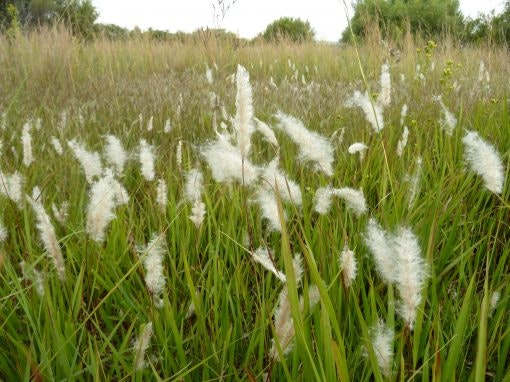COGAN GRASS – (Imperata cylindrica)

Cogan grass is an invasive, non-native grass which occurs in Florida and several other southeastern states. A pest in 73 countries, and considered to be one of the “Top 10 Worst Weeds in the World”, cogon grass affects pine productivity and survival, wildlife habitat, recreation, native plants, fire behavior, site management costs and more.
For a comprehensive resource of information aboutcogan grass, visit this link: https://bugwoodcloud.org/mura/cogongrass/assets/File/cogongrassid.pdf
Cogan grass may be one of the most damaging invasives in Volusia County due to its threat to pasture land and pine producing. It also increases the risk of wildfires and alters fire behavior. It was introduced into the USA in the early 1900s from Japan and the Philippines. The native range of cogongrass is vast and includes Africa, the Middle East, Europe, Asia and Australia.
Cogon grass is a tall (2-5 ft.) perennial grass with bright yellowy-green foliage. The leaf blades have a mid-vein which is clearly offset to one side, and serrated (toothed) edges. The rhizomes are hard, scaly, and cream-colored with sharply pointed tips. The seed head is fuzzy, white, and plume-like (see images above and below).
Eradication: It has been suggested that an application of “Rodeo”, followed by deep (12″) discing a couple of weeks later, and repeating if any regrowth occurs, is an effective way to eradicate cogan grass. This process may have to be repeated 2 or 3 times.
SIGN UP NOW FOR THE 2017 COGONGRASS TREATMENT COST-SHARE PROGRAM
Apply by August 30, 2017
A Cogon grass Treatment Cost-Share Program is offered to eligible non-industrial private landowners by the Florida Forest Service (FFS) through temporary grants from the USDA Forest Service. The primary objective of this program is to reduce the spread of cogon grass to new areas by helping private landowners control or eradicate existing infestations.
See http://edis.ifas.ufl.edu/wg202 for more information about this pest.